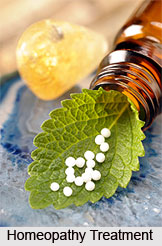 Treatment of common fever by homeopathy have always been looked at as the most pure, blissful and efficient form of a patient convalescing for the better. Homeopathic medicine and its impression upon an individual, besides being beneficial, can never have its harms of side-effects of supplementary illnesses. Unlike the chemical and factory-processed medicines utilised for allopathic treatments, homeopathy for common fever kind of instils a long-term judgment, moving in a slow pace. Indeed, homeopathic treatments and remedies are the most natural choice and option for treating common fever, defending the body`s immune defence systems, alleviating fever, but umpteen fever remedies, each of which suits a particular kind of common to severe case of fever.
Treatment of common fever by homeopathy have always been looked at as the most pure, blissful and efficient form of a patient convalescing for the better. Homeopathic medicine and its impression upon an individual, besides being beneficial, can never have its harms of side-effects of supplementary illnesses. Unlike the chemical and factory-processed medicines utilised for allopathic treatments, homeopathy for common fever kind of instils a long-term judgment, moving in a slow pace. Indeed, homeopathic treatments and remedies are the most natural choice and option for treating common fever, defending the body`s immune defence systems, alleviating fever, but umpteen fever remedies, each of which suits a particular kind of common to severe case of fever.
Various homeopathic fever remedies are presently readily available in the Indian society, all credit being bestowed upon globalisation. Aconite, Belladonna and Ferrum phosphoricum (popularly acknowledged as Ferrum Phos in colloquial dosage), some of the most employed and efficient homeopathic medicines for treatment of common fever, can veer the course of ear-aches, sore throats and other feverish infections. Aconite is known to smoothly lessen the intensity of unexpected high fevers, particularly when related to fretfulness, uneasiness, anxiety or exposure to cold wind. Belladonna also wonderfully reduces down abrupt bouts of intense fevers, but the cheeks still remain rosy, the pupils dilated and the skin parching hot and dry. The head as if reels under congestion and can also throb under unbearable circumstances. Ferrum phosphoricum wondrously comforts down common fevers that are neither intense nor characteristic of moving towards severity.
When very much into the phase of high common fever, the basic symptoms of feeling exceptionally tired and weak, with drooping eyes and knees all shaky and trembling, one is sure to also develop an intolerable headache nagging at the back of the head. Under such circumstances, medical practitioners soulfully advise and call for Gelsemium, a typical homeopathic remedy for treating common fever. Bryonia is also utilised heavily for instances of common fever, when aching overrides and nothing but lying extremely quietly makes one to feel mollified. Headaches, dry painful coughs and excessive thirst for voluminous amounts of cold water are also characteristic of common fever, securely treated by homeopathy.
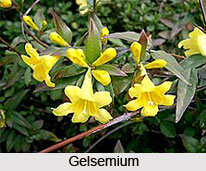 When common fever is combined with weakness, chills and singeing pains in patients who feel restless and prefer company, Arsenicum is the best option for him/her to just turn relaxed. Sipping warm drinks is also another mostly recommended advise during homeopathic treatment for common fever. Phosphorus is also used in a likeable manner, however the mood remains cheery in spite of the fever and an irresistible thirst for cold drinks hangs on. When young children suddenly turn peevish, finicky and inconsolable except when taken on the lap, Chamomilla is that very homeopathic medicine, which treats common fever irritability. Chamomilla also treats fevers associated with ear-aches, diarrhoea and several additional infections. Then again, when children feel to be much clinging and weepy, their nature gentle but needy and all the fever remedies do not fit in properly, professionals always advise for adults to administer Pulsatilla. Such suffering children yearn for open air environment; parents and adults are also asked to avoid aerated drinks for their children.
When common fever is combined with weakness, chills and singeing pains in patients who feel restless and prefer company, Arsenicum is the best option for him/her to just turn relaxed. Sipping warm drinks is also another mostly recommended advise during homeopathic treatment for common fever. Phosphorus is also used in a likeable manner, however the mood remains cheery in spite of the fever and an irresistible thirst for cold drinks hangs on. When young children suddenly turn peevish, finicky and inconsolable except when taken on the lap, Chamomilla is that very homeopathic medicine, which treats common fever irritability. Chamomilla also treats fevers associated with ear-aches, diarrhoea and several additional infections. Then again, when children feel to be much clinging and weepy, their nature gentle but needy and all the fever remedies do not fit in properly, professionals always advise for adults to administer Pulsatilla. Such suffering children yearn for open air environment; parents and adults are also asked to avoid aerated drinks for their children.
As has been stated above, the homeopathic medicine Gelsemium serves always as most effective in treatment of common fever. By utilising the Gelsemium remedy, the most common and widespread symptoms will help cool down a fever quickly and naturally without fright of sudden suppression. It has been recommended that Gelsemium needs to be employed as three 6C pills, four times everyday until the fever subsides. As an alternative, one take three of the stronger 30C pills, in a difference of 12 hours, only as required.
Treatment of common fever by homeopathy ideally redefines curing and healing the person/patient as a whole. It means that homeopathic treatment centres upon the patient as a person, as well not once overlooking his or her pathological condition. The medicines described and delineated always, are hand-picked after a full individual examination and case-analysis, which comprehends the medical history of the patient, his/her physical and mental constitution or composition, etc.
Listed down below are just few of the homeopathic medicines which have been found much effective in numerous cases of treatment in common fever:
Aconite
This medicine symbolises a synochal sthenic fever and is almost likeable to hyperaemia congestion and chill, premising inflammatory fever. Recurrent and everyday chilliness is common in fevers, as such, calls for the homeopathic medicine Aconite in treatment of common fever. There always exists redness of the face, too much heat and ofttimes an outward intolerable headache. A minor level of delirium does not however contra-indicate Aconite. The mental states are all considerable phases of common fever must also be taken into account - for instance, there exists fretfulness and restlessness from the violent circulatory storm; there exists dry skin, an uncontrollable thirst, frequent pulse beats and responses and sweaty respites. This homeopathic treatment of common fever is well indicated, if brought on by exposure to dry cold winds or chilling of the body after overheat, principally when warm and sticky. Aconite suits the young and sturdy and vigorous and however possesses no links with the weak and ailing. The unfailing characteristics of mental suffering and agony needs to be present for patients to be administered with this very homeopathic medicine for treating common fever. The attack of fever often terminates with a vital sweating mechanism, at times excited by application of Aconite.
The remedy Veratrum viride suits cases almost comparable to Aconite, but it possesses more arterial excitation and absolutely no uneasiness.
Gelsemium
This homeopathic treatment for common fever suits best in times of dreary, tedious, dazed or apathetic conditions. Gelsemium is mostly administered when the patient is sensing dizziness accompanied by drowsiness and the chill is half effective over the ailing. There exists a full flowing pulse with an element of weakness in the medicine Gelsemium. This homeopathic treatment of common fever runs parallel especially to remittent kinds of fever and to fevers brought on by warm, unwinding sudden changed weather. Common fever is further accompanied by too much of lethargy, muscular tautness and a yearning for complete and blissful rest, which is however not accompanied by severe thirst.
Ferrum phosphoricum
The Ferrum phosphoricum homeopathic treatment for common fever stands midway between Aconite and Gelsemium in feverish states and it may be differentiated from its counterpart homeopathic medicines by the rhythm and throb of its action. While Aconite is full and rebounding in effect, Gelsemium is soft and smooth flowing. And going by the mental symptoms, Aconite is marked with anxiety and Gelsemium by drowsiness and dullness.
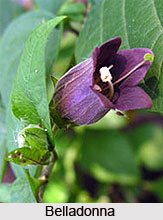 Baptisia
Baptisia
Professional practitioners praise the Baptisia homeopathic medicine for treatment of common fever which however remains incessant in every patient. Gastric fever, as is he claimed, shall never run into typhoid fever if treated with this particular remedy. Pulsatilla induces an effect of a thirst-less fever, accompanied by the head turning hot, lips going dry and chilliness all over, especially during the evenings. Chilliness very much overrides with this Baptisia treatment and remedy, there still existing but negligible heat.
Sulphur
Sulphur is looked at as an excellent treatment of homeopathy for common fever. The medicine comes in just after Aconite when the skin is parched and blistering and there exists no sweat at all however. Common fever as if appears to smoulder the patient up - the tongue goes dry almost suddenly and red and the patient at first is horribly sleepless and restless, but soon turns drowsy though. While administering sulphur to the patient, there can be witnessed no blood alterations; it is a chronic Aconite or a passive Aconite that actually does modifications of blood to the arteries.
Belladonna
Belladonna acts as a brilliant remedy for homeopathic treatment for common fever. It is distinctly marked by symptoms like erethism, brutal bouts of delirium, headache, hammering carotids and ill cerebral symptoms. The eyes generally turn red and sparkling; the skin goes searing and as if burning; the heat appears to exude out from the body in steam. Administering cold-compresses brings in no signs of relief. The characteristics of this homeopathic medicine can be stated as briefly: general dry heat accompanied by chills, little to absolutely no thirst; as a matter of fact, the patient may also develop an alarm against water, coldest extremities and hammering headache. The common fever that garners, gets worsened at night.
The Nux vomica (another type of homeopathic medicine) fever is characterised by extreme heat within the body - the whole body burns to utmost heat, the face especially grows red and glowing, yet the patient feels chilly when uncovering.
Bryonia
Bryonia is most suitable in a quite form of fever, believed to be quite efficient in treatment of common fever. Though it is true the patient may be restless and convulsing about horribly, but, that only makes him/her always more worsened thereby. There comes upon intense headache, a numb flummoxing tendency with a sensation as if the head would rip open at the temples. Knifelike pains persists over the eyes, a patient also has the risk to faint on rising up from the sick-bed, the mouth going dry and a tongue coated absolute white in the middle. Cold, chilly sensations prevail in fevers calling for Bryonia. There can be witnessed too much of thirst for big and voluminous drinks of water at rather intermittent intervals. The fever of Bryonia is somewhat overlooked by the violence, acuteness and all-encompassing impression of Aconite or the decomposition and immense encumbrance of the acids. This homeopathic medicine is neither synochal nor is markedly asthenic in character - it comes exactly between the two and is dependent on localised affectations, state of stomach, liver, chest, etc.
Rhus toxicodendron
Rhus toxicodendron acts at its best and is mostly called for during a kind of catarrhal fever, so-called, because it is met with frequently. Catarrhal fever starts with a failing of the whole body with intense longing to lie down, discomfort of soreness or bruised senses in the limbs, aching of limbs and bones, immense pain in the back, uneasiness and edginess. These feeling however further get even worse while lying still, accompanied by a nauseating stomach, complete loss of appetite, repulsion for food, too much of thirstiness, a complete dry tongue and mouth. This homeopathic medicine useful in treatment of common fever, also acts as an excellent anecdote in the borderlands, where feverish cases horribly modify into a typhoid condition.
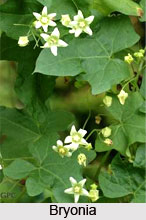 Ferrum phosphoricum
Mercurius
Ferrum phosphoricum
Mercurius
Mercurius serves as a homeopathic medicine in treating common fever, which is further characterised by extreme exhaustion and fatigue, sudden collapsing and violent shivering. The effect of this medicine is rather slow, accompanied by a persistent fever, generally also a gastric or a dyspeptic, remittent fever. Mercurius is distinctly characterised by the combinations of symptoms, which surprisingly no other homeopathic drug possesses, that being riotous salivation, parched throat and shattering thirst for cold water.
The Ferrum phosphoricum homeopathic treatment for common fever acts as a dazzling remedy, standing halfway between Aconite and Gelsemium in feverish conditions. The medicine can also be differentiated from its other counterparts by its functioning rhythm, which, under Aconite, is whole and reverberating and under Gelsemium soft and flowing. Going by the mental symptoms, Ferrum phosphoricum also differs in its course of action, with Aconite being marked by tremendous anxiousness and Gelsemium by drowsiness and dullness.
Baptisia tinctoria
The illness of gastric fever can never run into cases of typhoid fever, if treated with this homeopathic remedy.
Pulsatilla pratensis
Pulsatilla pratensis acts that type pf treatment of common fever, which induces within the patient symptoms like thirst-less status, a much heated head, desiccated lips and chilliness throughout the body, especially during the evenings. Chilliness although outweighs intelligently over the remedy, there existing but little heat.
Nux vomica
The Nux vomica homeopathic treatment of common fever is intelligently characterised by excessive heat; the entire body as if blistering to a limit of extremity. The face goes particularly flushed and hot, yet the patient senses chilliness when exposing the body to atmospheric temperature from the blanket.
Mercurius solubilis
As has been witnessed with all the previously mentioned homeopathic treatments of common fever, Mercurius solubilis is too characterised by lethargy and tiredness, sudden collapse and shivering. While administering this specific medicine, the fever is a little slow, lurking one, commonly a gastric or a dyspeptic, remittent fever. The medicine homeopathy is exemplified by particular combination of symptoms of body temperature, which is in itself one and only distinguishing element of Mercurius solubilis, those being identified as limitless salivation, a desiccated throat and irresistible thirst for cold water.
Homeopathic dietaries for treatment of common fever
Homeopathic treatment for common fever heavily advises a patient to stay and eat the absolute natural and organic way, making use as much less of artificial or processed food. As such, vegetable and whole meat is generally counselled. However, besides consuming food, treatment under homeopathy also counsels the ailing towards stretching himself/herself towards applying other methods of improvement and remedial measures, as can be seen under:
•One is advised to take a pinch of salt and put a few drops of mustard oil into it and also asked to blend it till the oil loses its fluidity. Later, the patient is required to swab this mixture on the nostrils, neck and chest. Though a sudden tickling effect can rise up a bit, yet, the relief that one earns, is fast, long-lasting and effective.
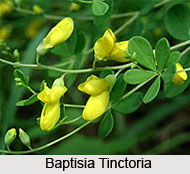 As an alternative medicine, one can also mix some jaggery and black pepper together and boil this blend in water. Then, a patient is a counselled to just sip this decoction as fast as possible when hot, just as one might drink tea.
As an alternative medicine, one can also mix some jaggery and black pepper together and boil this blend in water. Then, a patient is a counselled to just sip this decoction as fast as possible when hot, just as one might drink tea.
•To convalesce with speedy effort, one is also asked to squeeze the juice of two lemons in a glassful of water and apply an understandable amount of sugar to sweeten the mixture. This solution needs to be taken during bedtime to earn respite from problematic nasal catarrh.
•One more remedial measure and effective treatment of common fever by homeopathy is to blend nutmeg and opium with cow`s milk into a smooth paste. This later needs to be applied on the nose and the forehead while going to sleep.
•Coalescing black pepper, cinnamon, cardamom and the seeds of the Nigella sativa (Krishna Jeeraka) and utilising it as a snuff helps in opening gravely clogged up nasal passages.
•As an effective measure for homeopathic dietary treatment for common fever, a patient is normally counselled that prior to going to bed, one can apply eucalyptus oil on the forehead, chest and the nostrils. Then, he/she should wrap oneself up in a warm blanket and just go off to sleep. There exists chances that one can sweat profusely in the night, but this should be allowed to pass off. In the next morning, the common cold is bound to disappear, and so will any fever if present.
It is not at all prudent and worthwhile to stay back in a cramped and confined room when one is down with common cold and fever. It is always wise to open widely all the windows and let the air pass, keeping heed on the state that the cold air outside must also not seep through. As an alternative, one can take some walk amidst fresh air and get enough rest. Another point to take notice is that common fever is pretty infectious and spreads easily. Thus, if he/she is much prone to attacks of common cold, it is best and advisable to take all due precaution that the cold does not pass on to others. While in the phase common fever, one should not go near infants and children, as they are the most vulnerable and susceptible bunch to get attracted to common cold. Also, one needs to make use of a handkerchief when one is coughing or sneezing; keeping the cooking and eating utensils absolutely separate is also yet another wise idea to defend oneself against feverish bouts.




